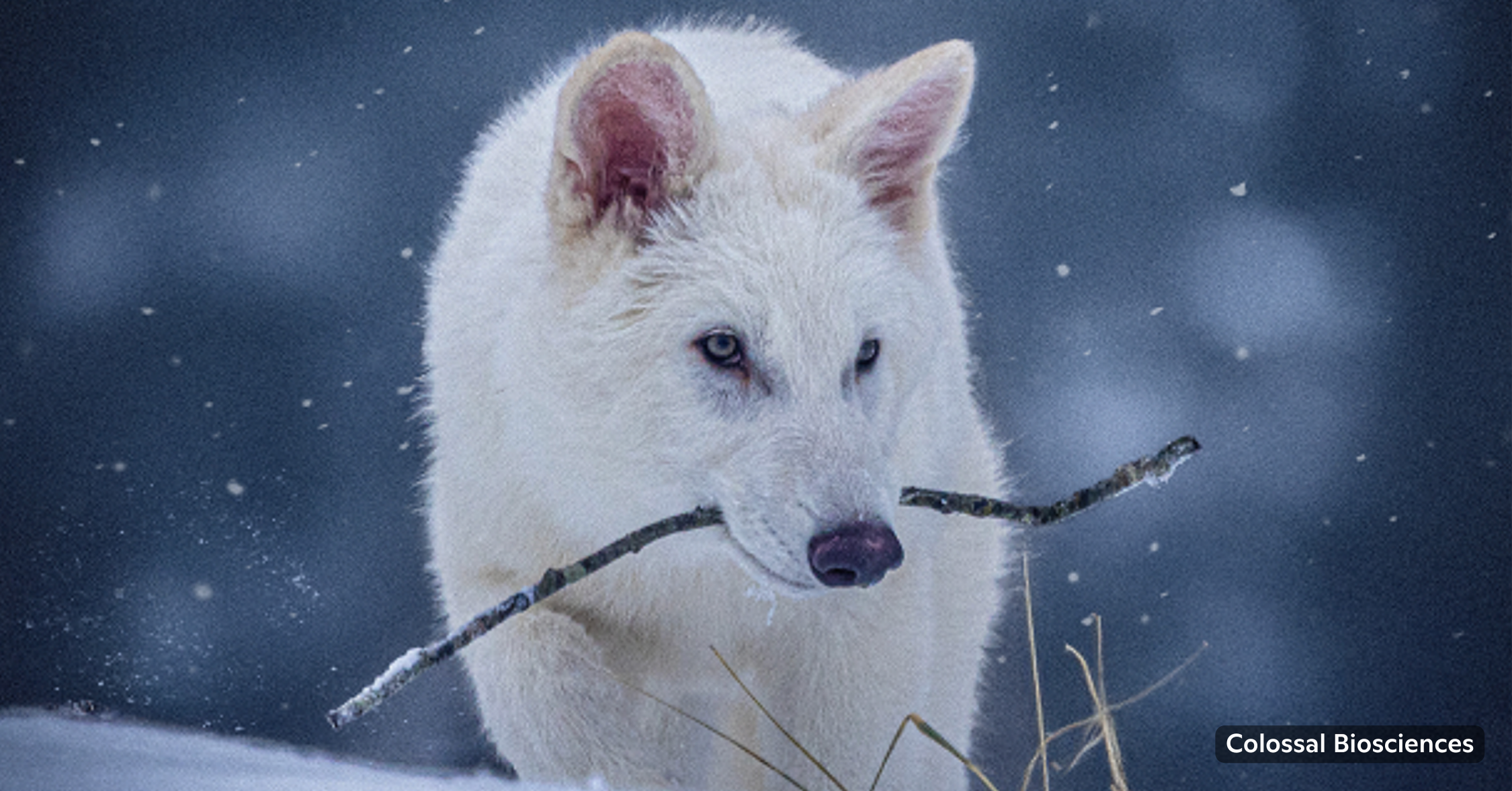
Biotech company Colossal Biosciences is making global headlines with its announcement that it has “brought back” the dire wolf (Aenocyon dirus) — a species that went extinct roughly 10,000 years ago.
If Colossal’s name sounds familiar, it might be because they’re the same company working to resurrect the woolly mammoth by 2028. Or because they’re backed by celebrity investors like Tom Brady, Paris Hilton, and Chris Hemsworth. Or because they’re not a conservation organization — they’re a for-profit tech company that is, in their words, “trying to actually develop products.”
The news about the dire wolf — and Colossal’s growing list of ambitions to resurrect other lost species — forces us to ask a bigger question: When it comes to reviving extinct animals… are we doing it for them, or for us?

On its surface, the idea of bringing back extinct species sounds exciting. Noble, perhaps. What better way to make up for humanity’s destructive exploits than to “restore” what our planet has lost?
But look closer, and the ethical cracks are clear.
At its heart, the resurrection of these animals is curiosity-driven exploitation — turning living beings into experiments in service of human ambition, technology, spectacle, and, of course, profit.
Despite the splashy headlines, the dire wolves Colossal created aren’t really dire wolves — they’re gray wolves, genetically edited to look like dire wolves. Yet, even if these lab-created hybrid wolves were biologically perfect copies of their ancient ancestors, a sobering reality cannot be ignored: there is no community of dire wolf peers who await them. Their social structures are gone. Their ecosystem no longer exists.

As such, revived species like the dire wolf, the woolly mammoth, or any other “de-extincted” animal will almost certainly spend their lives in captivity.
Like animals in zoos, they will exist as isolated curiosities. And like animals in labs, their incarceration will be (wrongly) excused as some kind of scientific necessity for the good of humankind.
Further, any “de-extincted” animal is likely to suffer just as animals in laboratories already do.
This is not a hypothetical concern. Animals exploited for human purposes — whether in labs, factory farms, or entertainment industries — endure captivity, frustration, loneliness, stress, injury, pain, and death in their unnatural, human-controlled environments. There is no reason to believe a resurrected species would experience anything different.
It’s easy to get caught up in the headlines. “Bringing back the dire wolf” sounds like something out of science fiction — bold, visionary, hopeful. But you already know the truth:
Real hope for animals doesn’t live in a lab — or in the pockets of billionaires.
Real hope for animals lives in compassion. In coexistence. In anti-speciesism. In justice.
If we really care about animals, the answer isn’t to resurrect them for our curiosity or gain — it’s to respect them enough to let them live, freely and fully, in the world we share right now.
Your call to action: We don’t need to resurrect extinct animals — we need to protect the living ones from extinction in the first place. Right now, two species of macaques are being driven toward disappearance not by nature, but by human greed. The animal research industry is profiting from their suffering. Help us fight back by demanding endangered species protections for long-tailed and pig-tailed macaques today.